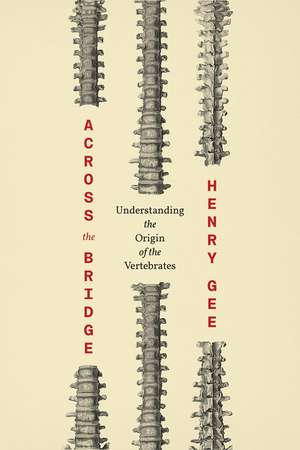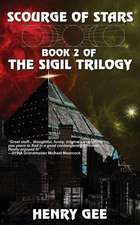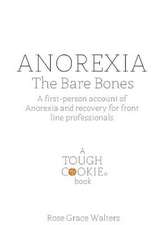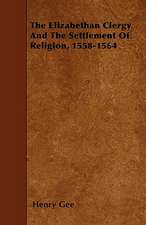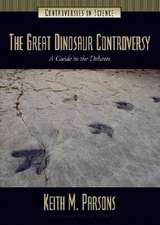Across the Bridge: Understanding the Origin of the Vertebrates
Autor Henry Geeen Limba Engleză Paperback – 19 iul 2018
Our understanding of vertebrate origins and the backbone of human history evolves with each new fossil find and DNA map. Many species have now had their genomes sequenced, and molecular techniques allow genetic inspection of even non-model organisms. But as longtime Nature editor Henry Gee argues in Across the Bridge, despite these giant strides and our deepening understanding of how vertebrates fit into the tree of life, the morphological chasm between vertebrates and invertebrates remains vast and enigmatic.
As Gee shows, even as scientific advances have falsified a variety of theories linking these groups, the extant relatives of vertebrates are too few for effective genetic analysis. Moreover, the more we learn about the species that do remain—from sea-squirts to starfish—the clearer it becomes that they are too far evolved along their own courses to be of much use in reconstructing what the latest invertebrate ancestors of vertebrates looked like. Fossils present yet further problems of interpretation. Tracing both the fast-changing science that has helped illuminate the intricacies of vertebrate evolution as well as the limits of that science, Across the Bridge helps us to see how far the field has come in crossing the invertebrate-to-vertebrate divide—and how far we still have to go.
As Gee shows, even as scientific advances have falsified a variety of theories linking these groups, the extant relatives of vertebrates are too few for effective genetic analysis. Moreover, the more we learn about the species that do remain—from sea-squirts to starfish—the clearer it becomes that they are too far evolved along their own courses to be of much use in reconstructing what the latest invertebrate ancestors of vertebrates looked like. Fossils present yet further problems of interpretation. Tracing both the fast-changing science that has helped illuminate the intricacies of vertebrate evolution as well as the limits of that science, Across the Bridge helps us to see how far the field has come in crossing the invertebrate-to-vertebrate divide—and how far we still have to go.
Preț: 185.18 lei
Nou
Puncte Express: 278
Preț estimativ în valută:
35.45€ • 36.46$ • 29.41£
35.45€ • 36.46$ • 29.41£
Carte disponibilă
Livrare economică 28 ianuarie-11 februarie
Livrare express 14-18 ianuarie pentru 25.67 lei
Preluare comenzi: 021 569.72.76
Specificații
ISBN-13: 9780226403052
ISBN-10: 022640305X
Pagini: 288
Ilustrații: 19 halftones, 12 line drawings
Dimensiuni: 152 x 229 x 25 mm
Greutate: 0.41 kg
Ediția:1
Editura: University of Chicago Press
Colecția University of Chicago Press
ISBN-10: 022640305X
Pagini: 288
Ilustrații: 19 halftones, 12 line drawings
Dimensiuni: 152 x 229 x 25 mm
Greutate: 0.41 kg
Ediția:1
Editura: University of Chicago Press
Colecția University of Chicago Press
Notă biografică
Henry Gee is a senior editor at Nature and the author of such books as Jacob’s Ladder, In Search of Deep Time, The Science of Middle-earth, and, most recently, The Accidental Species: Misunderstandings of Human Evolution, the last published by the University of Chicago Press. He lives in Cromer, Norfolk, England, with his family and numerous pets.
Cuprins
Preface
Chapter One: What Is A Vertebrate?1.1 Vertebrates in Context
1.2 What Makes a Vertebrate?
1.3 Breaking Branches
1.4 Summary
Chapter Two: Shaking the Tree1.2 What Makes a Vertebrate?
1.3 Breaking Branches
1.4 Summary
2.1 Embranchements and Transformation
2.2 Evolution and Ancestors
2.3 Summary
Chapter Three: Embryology and Phylogeny2.2 Evolution and Ancestors
2.3 Summary
3.1 From Embryos to Desperation
3.2 Genes and Phylogeny
3.3 Summary
Chapter Four: Hox and Homology3.2 Genes and Phylogeny
3.3 Summary
4.1 A Brief History of Homeosis
4.2 The Geoffroy Inversion
4.3 The Phylotypic Stage
4.4 The Meaning of Homology
4.5 Summary
Chapter Five: What Is A Deuterostome?4.2 The Geoffroy Inversion
4.3 The Phylotypic Stage
4.4 The Meaning of Homology
4.5 Summary
Chapter Six: Echinoderms
Chapter Seven: Hemichordates
Chapter Eight: Amphioxus
Chapter Nine: Tunicates
Chapter Ten: Vertebrates
Chapter Eleven: Some Non-deuterostomes
Chapter Twelve: Vertebrates from the Outside, In
12.1 Introduction
12.2 The Organizer
12.3 The Notochord
12.4 Somitogenesis
12.5 Segmentation and the Head Problem
12.6 The Nervous System
12.7 Neural Crest and Cranial Placodes
12.8 The Skeleton
12.9 Summary
Chapter Thirteen: How Many Sides Has A Chicken?12.2 The Organizer
12.3 The Notochord
12.4 Somitogenesis
12.5 Segmentation and the Head Problem
12.6 The Nervous System
12.7 Neural Crest and Cranial Placodes
12.8 The Skeleton
12.9 Summary
13.1 Introduction
13.2 The Enteric Nervous System
13.3 The Head and the Heart
13.4 The Urogenital System
13.5 The Gut and Its Appendages
13.6 Immunity
13.7 The Pituitary Gland
13.8 Summary
Chapter Fourteen: Some Fossil Forms13.2 The Enteric Nervous System
13.3 The Head and the Heart
13.4 The Urogenital System
13.5 The Gut and Its Appendages
13.6 Immunity
13.7 The Pituitary Gland
13.8 Summary
14.1 Fossils in an Evolutionary Context
14.2 Meiofaunal Beginnings
14.3 Cambroernids
14.4 Vetulicystids
14.5 Vetulicolians
14.6 Yunnanozoans
14.7 Pikaia
14.8 Cathaymyrus
14.9 The Earliest Fossil Vertebrates
14.10 Conodonts
14.11 Ostracoderms and Placoderms
14.12 Summary
Chapter Fifteen: Breaking Branches, Building Bridges14.2 Meiofaunal Beginnings
14.3 Cambroernids
14.4 Vetulicystids
14.5 Vetulicolians
14.6 Yunnanozoans
14.7 Pikaia
14.8 Cathaymyrus
14.9 The Earliest Fossil Vertebrates
14.10 Conodonts
14.11 Ostracoderms and Placoderms
14.12 Summary
15.1 Defining the Deuterostomes
15.2 Ambulacraria
15.3 Echinoderms
15.4 Hemichordates
15.5 Chordates
15.6 Amphioxus
15.7 The Common Ancestry of Tunicates and Vertebrates
15.8 Tunicates
15.9 Vertebrates
15.10 Cyclostomes
15.11 Gnathostomes
15.12 The Evolution of the Face
15.13 Crossing the Bridge
15.14 Conclusions
Notes15.2 Ambulacraria
15.3 Echinoderms
15.4 Hemichordates
15.5 Chordates
15.6 Amphioxus
15.7 The Common Ancestry of Tunicates and Vertebrates
15.8 Tunicates
15.9 Vertebrates
15.10 Cyclostomes
15.11 Gnathostomes
15.12 The Evolution of the Face
15.13 Crossing the Bridge
15.14 Conclusions
References
Index
Recenzii
"Across the Bridge is a deft and well-argued distillation of how advances have shifted the field to the point of dispatching some of the most influential and elegant classical hypotheses, and it is a bold attempt at developing a new synthesis. It thereby deepens understanding of our own evolutionary origins."
"Fascinating. . . . Gee is mainly forward-looking, presenting a cogent and new, but inevitably controversial, hypothesis. . . . We are clearly experiencing a golden age of biology, where molecular, genomic and phylogenetic technologies can all be brought to bear on long-standing, puzzling questions about the evolution of life. As Gee is careful to emphasize, there is nothing goal-directed or magical about the process of evolution. What is magical, though, are the products of that relentless process that made the vertebrates what they are and gave us the ability to study and understand how they evolved."
“An excellent addition, complementing Gee’s earlier book Before the Backbone, which provided a historical perspective on ideas surrounding vertebrate origins. Gee addresses an important topic for biologists and zoologists about vertebrates’ place in the ‘grand scheme.’ We are familiar with vertebrates, or think that we are. However, Gee shows beautifully, as a group we are just as strange in many ways as other groups appear to us. Across the Bridge takes on a very esoteric subject and is genuinely witty and charming. The book really is magnificent.”
“In Across the Bridge, Gee writes a beautiful ode to some of the least appreciated animals, who reveal our own evolutionary origins: the deuterostomes. Combining a sense for detail and prosaic ease, Gee guides the reader joyfully through deuterostomes—weaving disparate elements of embryology, paleontology, and morphology into an unprecedented and accessible narrative. This book not only gives a state of affairs—being an excellent primer for anyone interested in early animal evolution—it also proposes novel, compelling, and challenging hypotheses for researchers to test for decades to come. As senior editor of Nature, Gee has had a first-row seat to the revelations made across the disciplines of evolutionary biology for almost thirty years. Here, he has applied his polyhistoric expertise in this field to propose a vision for future interdisciplinary research, as well as created what will surely become a classic textbook for future generations of students.”
"...this is a scientific argument that proposes a particular scenario for vertebrate origins. [Gee] presents a data-filled narrative that takes advantage of the substantial advances made during the past two decades in molecular phylogenetics, evolutionary developmental biology, and paleontology. These new data provide surprising insights.."
"Across the Bridge by Henry Gee is a thorough exploration of a topic near and dear to the author’s heart. . . . [that] explores new advances and concepts about the origins of vertebrates. . . . A much-appreciated addition."
